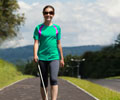Synchronizing two different cochlear signals from two cochlear implants, one from each ear can help the deaf, hear in stereo, just like normal ears, finds a new study.

‘Currently, individual cochlear implants send information to the brain independently, but the brain does not integrate the signals in an optimal way, and so a new technique has to be used to synchronize those two cochlear signals that stimulate the brain.’





During the 175th Meeting of the Acoustical Society of America, being held May 7-11, 2018, in Minneapolis, Minnesota, Litovsky will present data showing a new technique that synchronizes the cochlear signals that stimulate the brain in a way that is similar to people who can hear normally."The first time I present a [deaf] child or adult with sounds that are truly coordinated, their face lights up as they experience that aha! moment where they truly hear a stereo sound," Litovsky said. "The goal is to make this method work outside the lab, but it remains a challenge from an engineering point of view."
According to Litovsky, the brain acts like a little computer. It uses the synchronized information to calculate the difference as sound waves arrive at each ear from different locations. These mental calculations help people locate sounds and separate speech from noise. Currently, individual cochlear implants send information to the brain independently, but the brain does not integrate the signals in an optimal way.
Cochlear implants do not restore the ear's ability to pick up soundwaves. Rather, these surgically implanted devices bypass the damaged inner ear and translate sound into electrical pulses that stimulate the auditory nerve. The Food and Drug Administration has approved the implants in children as young as one year of age.
Litovsky is committed to synchronizing auditory experiences, especially for young children. The brain loses plasticity during development, so it is harder to learn to synchronize sounds later in life.
Advertisement
For Litovsky, being able to get to know deaf adults and children and seeing how their lives are improved by the implants makes all of these challenges worth the struggle.












